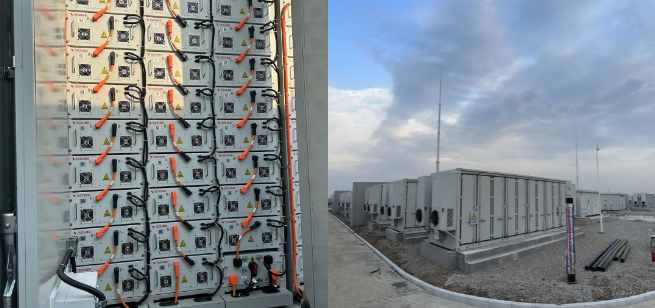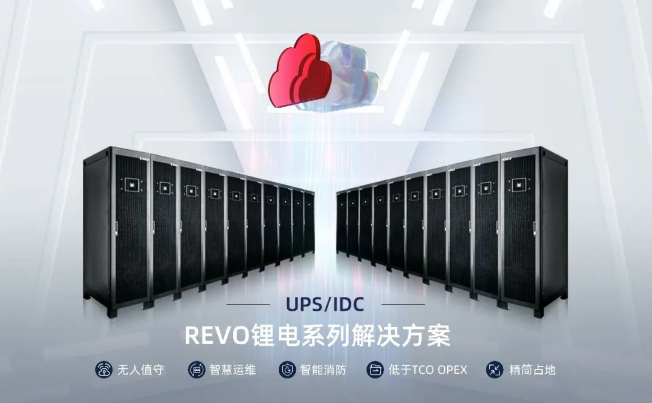
News
Can you really make money in the energy storage industry that China and the U.S. are targeting?
In recent years, energy storage has been a hot topic in the energy sector.
Currently, the United States, Europe and Asian countries have formulated policies to support the energy storage industry, with the United States having elevated the energy storage industry to a high level of national energy strategy. Guided by the dual carbon goal, China's national and local governments have introduced more than a hundred energy storage related policies.
What is the reason behind the energy storage fire? Which technology will dominate the earth, lithium battery energy storage, sodium ion energy storage or hydrogen energy storage? Is it really possible to make money doing energy storage? Next, let's find out in the article.
Why is energy storage being taken seriously?
China's cumulative installed capacity of wind and photovoltaic power generation is the highest in the world under the influence of the double carbon target. However, wind power and photovoltaic are unstable and intermittent, and their integration into the grid may lead to problems with the safety of the power system, or even be considered as "rubbish power".
Energy storage, on the other hand, can solve this problem.
energy storage is the equivalent of a "rechargeable battery", which can be used to charge wind power and photovoltaic power when it is generating a lot of power or when the power consumption is low, and to discharge when the power output of the landscape is low or when the power consumption is at its peak. It can smooth out unstable photovoltaic power generation and wind power, improve the proportion of renewable energy, but also with conventional thermal power, nuclear power and other power sources, for the operation of the power system to provide peak and frequency regulation and other auxiliary services to improve the flexibility of the power system.
At present, global competition for energy resources is becoming increasingly fierce, and China is also facing major changes in energy restructuring. Achieving the complementary integration of clean energy and fossil energy is the key to building a new energy system. Therefore, the development of large-scale energy storage technology is not only a necessary step for the low-carbon and clean power system, but also a powerful means to seize the strategic high ground of international energy technology and guarantee national energy security.
Since energy storage is so important, what are the current technical routes worth developing and laying out?
According to the "Opinions of the State Council of the Central Committee of the Communist Party of China on the complete and accurate implementation of the new development concept to do a good job in carbon peaking and carbon neutral work", China's current energy storage technology routes are broadly divided into two categories: pumped storage and new energy storage.
Pumped storage: the big brother of the installed capacity list
The working principle of pumped storage power stations is to dig a reservoir on the mountain and under the mountain, pumping water up the mountain at low power consumption and releasing water down the mountain at peak power consumption, driving turbines to generate electricity when the water flows down the mountain, generally combined with hydroelectric and nuclear power stations.
By the end of 2022, the cumulative installed capacity of power storage projects in operation worldwide was 238.2GW, of which, pumped storage had the largest cumulative installed capacity of 188.2GW, making it the absolute largest brother on the installed capacity list.
In 2022, the cumulative installed capacity of pumped storage in both the world and China falls below 90%, at 86.3% and 89.3% respectively.
The high power, long discharge times and low levelised costs of pumped storage give it an advantage on the power generation side. However, geographical constraints such as high capital costs and long construction periods are limiting the development of pumped storage plants.
New energy storage: a hundred different technologies
All forms of energy storage, except pumped storage, can be included in the category of "new energy storage".
Over the past year, energy storage technologies have made significant progress. From the perspective of the new installed technology in 2022, lithium-ion battery energy storage technology accounted for 94.2%, still in the absolute dominant position, new compressed air energy storage and liquid flow battery energy storage technology accounted for 3.4% and 2.3% respectively, accounting for a significant acceleration in the growth rate. In addition, hydrogen energy storage, flywheel, gravity, sodium ion and other energy storage technologies have also entered the engineering demonstration stage, the following will select some key energy storage technologies to share.
Lithium-ion battery energy storage
Lithium-ion batteries have good power multiplier characteristics and are the mainstream technology in the current energy storage and frequency regulation market. The frequency regulation performance of lithium-ion batteries far exceeds that of thermal power units, with a short response time that can meet the demand for fast and accurate frequency regulation. At present, lithium-ion battery FM projects are mainly used in the US, UK, Korea, Australia and China worldwide.

There are more than 1,000 enterprises engaged in the lithium-ion battery industry worldwide, and a complete industry chain has been formed from lithium battery materials, cells, modules to system integration.

In particular, the cost of lithium-ion batteries has fallen in recent years due to the electric vehicle industry, thus greatly boosting their use in power storage.
Compressed air energy storage
Compressed air energy storage, as the name implies, is the use of compressed air to store energy when electricity is plentiful, and to use the compressed air to generate electricity when it is needed. Compressed air energy storage technology has the advantages of large energy storage capacity, long storage cycle, high system efficiency, long operating life and small investment, making it one of the large-scale physical energy storage technologies that are very suitable for long term energy storage.
In recent years, compressed air energy storage technology in system integration demonstration, relevant domestic research institutions and enterprises have made remarkable achievements. 2021 Feicheng, Shandong Province, completed the first international 10MW salt cavern advanced compressed air energy storage commercial demonstration power station; the power station has successfully passed the power generation and grid acceptance, and formally grid-connected power generation, system efficiency reached 60.7%. In foreign countries, Canada, Australia, the United States, the United Kingdom and other countries have also laid out a number of large-scale compressed air energy storage projects.
Sodium ion energy storage
Sodium ion batteries have become a research hotspot for energy storage technology due to their abundant resources, low cost, high energy conversion efficiency, long cycle life and low maintenance costs.
In the past 10 years, sodium ion batteries have gradually achieved a leap from basic research to engineering applications. New energy companies such as Vision Battery are making layouts related to the industrialisation of sodium ion batteries and have made significant progress.
According to the existing technology maturity and manufacturing scale, sodium ion batteries will first enter the market from various types of low and medium speed electric vehicles. With the gradual improvement and scale of the upstream and downstream industry chain of sodium ion battery technology, its application will gradually cut into various applications such as user side and large scale energy storage.
Hydrogen energy storage
Hydrogen energy storage refers to the use of surplus new energy power in the low season to produce hydrogen by electrolysis and store it or use it for downstream industries; in the peak season, the stored hydrogen energy can be used for power generation by fuel cells and connected to the public grid. Broadly speaking, hydrogen storage emphasises the one-way conversion from electricity to hydrogen, storing hydrogen in gaseous, liquid or solid form, or converting it into chemical derivatives such as methanol and ammonia for safer storage.
Hydrogen energy storage has the advantages of cross-seasonal, cross-regional and large-scale storage, as well as a certain rapid response capability, and has strong application value in all aspects of the new power system "source, network and load".
At the same time, the development of hydrogen energy storage has been relatively slow due to the relatively low system efficiency and high system cost. However, high storage capacity and high discharge time are the advantages of hydrogen energy storage, which can effectively supplement the shortage of electrochemical energy storage and help the development of new power systems, making it an important technology direction for the future transformation of the energy structure.
Can energy storage make money?
In terms of basic business models, the main ways in which energy storage can be profitable can be divided into two ways: peak-to-valley price differentials and ancillary service markets.
Buy low, sell high, cut peaks and fill valleys
Due to people's natural electricity consumption habits, sometimes more electricity is used (usually in the morning and afternoon) and sometimes less (usually at night), creating "peaks" and "valleys" during the day.
However, peak and valley fluctuations can increase operating costs for power systems, so in order to try to even out the difference between peak and valley, grids often set peak and valley electricity prices, with high prices during peak hours and low prices during valley hours. This creates an opportunity for energy storage arbitrage, where the energy can be charged at night when prices are low, and then sold at high prices to earn the difference.
Peak and frequency regulation, ancillary services
The grid requires technical means to regulate frequency and voltage, of which frequency regulation requires regulation equipment that can quickly send (boost frequency) or absorb (reduce frequency) power, and such services provided to the grid are collectively known as "auxiliary services", and energy storage is an excellent auxiliary service provider.
Market rules and tariff policies around the world in 2022 gradually include the cost of ancillary services in the electricity tariff settlement for power users, further expanding the scale of the ancillary services market, although due to the size of the market and the balance of funds, it is mainly apportioned around the world in the form of revenue collection and expenditure.
The auxiliary services market is the main channel for reflecting the value of the electricity and power used by the new energy storage to support the safe operation of the system, and it is also the main source of revenue obtained by the new energy storage.
In addition to this, the future of energy storage can also be achieved through a variety of innovative business models to achieve profitability, such as cloud energy storage, shared energy storage, etc. In September last year, Vision Battery signed a cooperation with Zhejiang Tower using the contract energy management (EMC) model, which is the effect of "I invest, you save energy and benefit together". With the encouragement of domestic policies, battery-related enterprises have already done a good job in laying out and setting up their "positions", so let's look forward to how the energy storage industry is heading.


